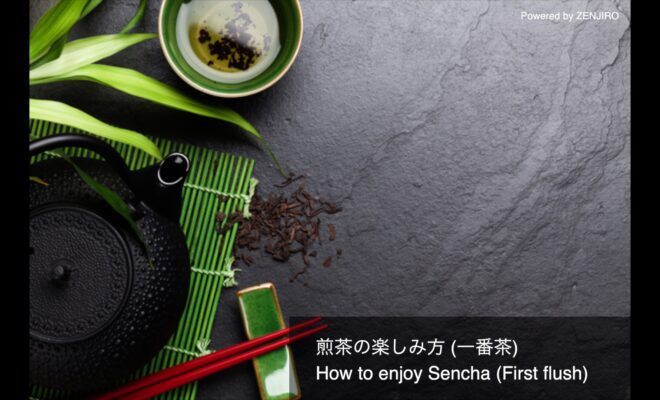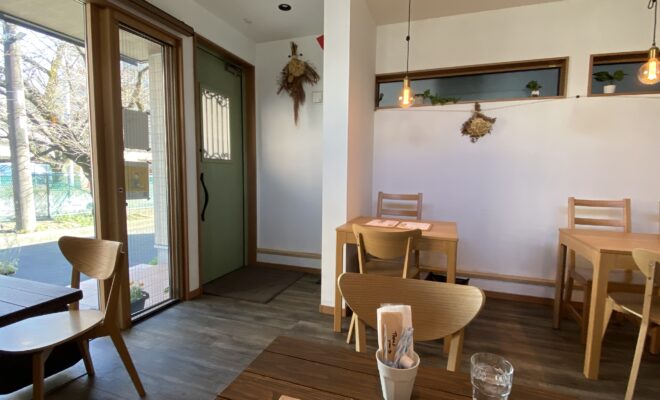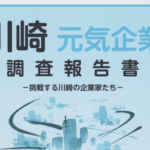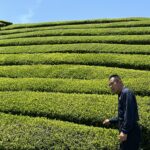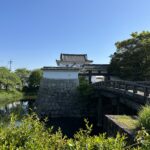Many temples that symbolize Japanese culture were built during the samurai era, such as the Kamakura and Muromachi periods, but many shrines have existed since ancient times, some of which are said to have originated in the Jomon period. It is no exaggeration to say that the unique customs and behaviors of the Japanese, as well as the spirit of respecting all things in the natural world, have been formed since the Jomon period. The Jomon period lasted for over 10,000 years from around 14,000 BC to 400 BC.
Surprisingly, although many Jomon period ruins have been discovered and excavated all over the country, no weapon capable of killing or injuring humans has been found. It is said that it was a very rare civilization in the history of the world that a peaceful era continued for 10,000 years. Also, as I mentioned in the topic of traditional handicrafts, 12,600-year-old pieces of lacquer wood and 9,000-year-old lacquerware were discovered, demonstrating the extremely high level of technology. The world’s oldest civilization is the Sumerian civilization in the early Mesopotamian civilization, which is said to have been around 5500 BC to 2000 BC.
Archaeologically, it is said that humans came to the Japanese archipelago 30,000 years ago during the Paleolithic era. The National Museum of Science and Technology planned a project to cut down a huge tree with stone tools, cross the sea of the Ryukyu route in a dugout cano, and recreate the voyage 30,000 years ago. Kusatsusen and bamboo raft boats failed, and only dugout boats succeeded, but the number of crews was only 5 times. In the first place, when there were no metal saws, just cutting down a large tree with a stone ax would require swinging the ax 36,000 times. This project took 6 years.
In addition to Noah’s Ark in the Old Testament, there are legends all over the world that mankind survived through great floods and ships. The largest wooden sailing ship in the world was the Prussia, which was built in Germany in the Meiji period and was boarded by Soseki Natsume when he was studying in England. . How much labor and technology will it take to build a huge ship that will allow people to escape and store food? When you think about it, it’s a tremendous thing. Ancient mysteries excite our minds, don’t they?
I’ve always been a history buff, but it wasn’t until the 2000s that I became interested in everything from the Jomon period to the early Japanese period. At the time, I was working in the asset management industry, managing funds for domestic and overseas institutional investors. From that relationship, I had exchanges with Jews who operate Jewish capital and hedge funds, etc., which show their presence in the financial world. Persecuted Jews scattered around the world were not allowed to join the guilds of medieval European merchants’ unions, so they had a unique existence, such as inventing department stores and inventing banknotes from money lending jobs. After that, he became a financial conglomerate such as Rothschild, and was very successful in the financial industry such as the US department store industry, Hollywood movies, securities and banks.
Under such circumstances, from around the early 2000s, there was a big event that made me interested in ancient history. The Jesus Christ restored in the science documentary “Son of God” broadcast by the British BBC in 2001 is a Middle Eastern man with black hair, black eyes, black beard, dark eyebrows and a round face. did. In addition, genetic analysis is making rapid progress in the field of life science. In 2003, mankind completed the decoding of the human genome. As a result, mankind have made great progress in the fields of IPS cells and pharmaceuticals, and it is still fresh in our memory that RNA vaccines have spread even during the recent COVID crisis. In the field of archaeological anthropology, the decoding of the human genome has developed research to elucidate the “roots of mankind.”
Mitochondrial DNA analysis, which can elucidate maternal inheritance, can divide the Japanese into two lineages, one of which is not of Asian descent, but rather of African descent. In addition, it was revealed that most of the Y-chromosomal DNA that can elucidate paternal inheritance is in the D and O strains, and that the D2 strain accounts for almost half. D2 is distributed evenly throughout the Japanese archipelago, but 90% of Ainu people are D2. In Kyushu, where there are many immigrants from the continent, there are few, but in Okinawa there are as many as the Hokkaido Ainu. In Israel, a special agency called Amishav was established in 1975 to investigate the subsequent whereabouts of the “10 lost tribes” after the Assyrian captivity in 721 BC, and the descendants of ancient Israel scattered around the world.
Jacob, the grandson of Abraham in the Old Testament who made a covenant with God and became the ancestor of Israel, had 12 sons and formed twelve tribes. Only the eleventh son, Joseph, went to Egypt and became prime minister. Ephraim and Manasseh, the sons of Joseph, formed two tribes of Egyptian mixed ancestry. Afterwards, the Egyptian Jews were led by Moses to escape Egypt and crossed over to the Sinai Peninsula to establish the state of Israel in the land of Canaan. and King Solomon, ancient Israel was destroyed by Assyria in 733 BC, and each tribe was scattered around the world. Of these, the Ephraim and Manasseh tribes are said to have headed east.
The result that the grouping of the Japanese by genetic analysis is similar to that of African descent can easily be explained by considering that Ephraim and Manasseh, who were two tribes of Joseph and had Egyptian blood, came to Japan.
Japanese and ancient Jewish Hebrew have many things in common, Japanese folk songs have meanings in Hebrew, Japanese Shinto rituals and festivals are similar to Jewish customs, and so on. There was a lot of circumstantial evidence of In 1878 (Meiji 11), an Englishman published for the first time the Japan-Jewish common ancestry theory, which states that Japan and the Jews have the same ancestor.
An anecdote about Jacob Schiff, an American Jewish banker who underwrote Japanese government bonds denominated in British pounds to raise funds for the Russo-Japanese War of 1904 (Meiji 37) during the difficult times. And the story of Chiune Sugihara, a diplomat who issued visas to 6,000 Jewish refugees who were persecuted by Nazi Germany in 1940 during World War II and cooperated in their evacuation from the country. These stories might be influenced by the Japan-Jewish common ancestry theory. In any case, I had been skeptical about the theory until then, but this genetic analysis made a lot of sense to me.
In 2006 days, I thought that the Ephraim tribe, one of the tribes of Joseph who went to Egypt among the tribes of Israel, came to Japan first after the Assyrian captivity. moved east while establishing The Yuezhi in Central Asia, founded Qin in China in 247 B.C., and then entered Japan as the Hata clan via the Korean Peninsula. And I thought that Kyoto’s Uzumasa and Yasaka Shrine were considered to be the Manase tribe of the Hata clan.
Around the 2010s, the Japanese-Sumerian same-ancestry theory began to develop from the Japan-Jewish same-ancestry theory. The Sumerian civilization is the earliest civilization of the Mesopotamian civilization, which is the oldest in the world and is said to have started around 5500 BC. A civilization suddenly started by people from the east, using cuneiform writing, constructing advanced structures, and famous for the epic of Gilgamesh.
In terms of the context with Judea, Abraham, the ancestor of the Jews, left the city of Mesopotamia and set out on a journey. Therefore, broadly speaking, it is influenced by the Mesopotamian region called Sumer, and it is said that the region is much older than Judea.
The basis of the Japanese Sumerian coancestry theory is that the ancient Hebrew language used in Sumer and the names of places, gods and kings are very similar to Japanese mythology. The emperor is called Sumeramikoto and is said to mean the honorable one who governs, but it seems to be the Hebrew meaning of “King of Sumer”.
The Kojiki, which is regarded as the legitimate history of Japan, was completed in 712 AD, and the Nihon Shoki was completed in 720 AD. Aside from the author, the person who supervised the compilation was Fujiwara no Fuhito, the second son of Nakatomi Kamatari and the founder of the Fujiwara clan, the top aristocrat in the Heian period. Nakatomi Kamatari overthrew the Soga clan, a senior vassal of the Imperial Court during the Asuka period, and solidified the system within the Imperial Court. prevailing view is that the Kojiki and Nihon Shoki (Kiki) were edited by rewriting ancient legends and histories for the convenience of the Fujiwara clan. It is said that the correct history is based on the Kojiki. The act of rewriting history to suit the powers of the time was also done in China, South Korea, and other countries.
In addition to the Kojiki and Nihonshoki, there are quite a few documents branded as forgeries. Takeuchi Documents and Miyashita Documents are famous. Originally, these were passed down by word of mouth. an oral tradition. For example, the orthodox Takenouchi Documents are said to be oral traditions of the lineage of Takenouchi no Sukune. Takenouchi no Sukune was the first minister in Japan to support Yamato Takeru’s father, Emperor Keiko. Designed for Takenouchi no Sukune originally belonged to the Mononobe clan, and is also the ancestor of the Soga clan, who supported the Imperial Court during the Asuka period. Nakatomi Kamatari (Fujiwara clan) destroyed the Soga clan and established the Kiki as legitimate, and the Takeuchi Documents, which had been handed down orally since the time of his rival Takenouchi Sukune, were regarded as forgeries.
In any case, the research on ancient times has been based on the Japan-Jewish same-ancestry theory, which was discovered and announced by the British in the Meiji period, and the human genome analysis in the Heisei period added supportive evidence for genetic classification It has developed into a Japanese Sumerian coancestry theory that incorporates the knowledge of other researchers.
In addition, the Yonagunijima Undersea Ruins discovered in 1986, the 9,000-year-old lacquerware found at the Hakodate ruins in 2000, and the world’s oldest 12,600-year-old shell mound in Torihama Shell Mound, Fukui Prefecture, were announced in 2011. There have been many surprising discoveries in the world’s oldest Jomon period, such as pieces of Urushi wood.
The Sumerian Jews arrived in Japan several hundred years ago. The Sumerians who appeared from the east around 5500 BC and also disappeared suddenly, so even if the Sumerians came to Japan in the east, the early Ubaid dynasty would end around 3500 BC.
However, since the Jomon people had lived a comfortable life in Japan for a long time, I have long wondered whether the immigrants from the Middle East were only one-way crossings from west to east. who were the most advanced at that time, went west to establish the Sumerian civilization, and then returned to Japan around 3500 B.C. It seems more natural to think that there must have been several exchanges of coming and going. The Sannai-Maruyama ruins in Aomori Prefecture date from 2900 BC to 2200 BC, and it is said that obsidian from Suwa and Kozushima was traded with foreign countries. The trading partner may have been the continental network that the Sumerians created on their return journey back to eastern Japan.
If the Jomon people headed west and established the Sumerian civilization, the question would be, “Why did they leave Japan?” A related discovery was his investigation of the Kikai Caldera, which began in 2016. The Kikai Caldera, a submarine volcano about 50 km south of the Satsuma Peninsula, erupted 7,300 years ago, around 5,300 BC, the largest eruption in the past 10,000 years. The volcanic ash reached as far as the Tohoku region, and in areas where it accumulated more than 20 cm, it reached just before Osaka, Kyoto, and Ise. The estimated age error is about 200 years. If it is assumed that the Jomon people of Kyūshū originated the Sumerian civilization westward after the eruption of the Kikai caldera, or if it was a sign of the eruption, then chronologically is connected.
Where did the Jomon people come from?
In 2020, a translation of a book called Oaspe was published and has become a hot topic. It is said that John Newbrough, a 19th-century dentist and a member of Freemasonry, wrote automatically according to God’s instructions, and that the FRB at the time banned and sealed it. It seems that it has become a paid public release in recent years. The contents are written in detail from the creation of the universe, the birth of mankind, and the history up to 3950 BC. According to it, after the selection of several types of human beings, when the highly civilized and prosperous Pan Continent in the Pacific Ocean sank into the sea and a great flood occurred, 12,420 surviving human beings esacaped to other regions of the world by 4 fleets of 34 ships.
And two other ships reached an unsinkable piece of land in the northwestern part of the continent of Pan. It was called “The Pan” and became “Japan”. Oaspe also seems to mention that it is the Japanese who will ultimately save mankind. It’s a great honor for us Japanese, but I think it’s more important to be diligent as a Japanese person every day.
It’s a very interesting story, but unfortunately there is a lack of scientific and objective evidence at the moment. For example, a simple calculation of these 138 ships means that each ship will carry 90 people and food reserves. In an era without metal, it is hard to imagine that a stone ax would be able to build a ship comparable to the world’s largest sailing ship, the Prussia. However, it is in the field of history that new discoveries are added over time. I will continue to explore this topic from time to time.




